Last Updated on August 18, 2022
A recent report from the material Innovations Initiative (MII) outlines the enormous demand and potential for next-generation materials. The report highlights the efforts of 75 innovators in the field. Since 2015, more than $1.29 billion in investment has been made in the industry.
Future materials are those that adapt to external stimuli to improve their properties. These matters could enhance the functions of the human body, as well as drug delivery and grafting in transplants. Ultimately, these smart materials could be a game-changer.
With constant innovation and R&D, new ways of producing elements that are versatile, effective, and sustainable are being optimized. Next-gen materials have the properties of being super-light, smart, and active materials that can adapt proportionately to their environment.
The future of materials is high-performance structural composites with enhanced multifunctional capabilities. They have the properties of being thermal, electric, and fire resistant as well as conductive.
The emergence of next-generation materials has been fueled by advanced simulation tools that enable researchers to understand the fundamental interactions among molecules and atoms, which in turn control their behavior. This allows them to optimize the materials before they even go to the manufacturing stage.
The primary goal of engineering new generation materials is to design them with specific properties that can be tuned to control a physiological environment or induced responses. This has major implications for companies, economies, and societies.
There are a number of factors that make it necessary to invest in the future of materials. While revenue is an obvious factor for companies, next-generation materials can guarantee the quality of products while complying with ethical and environmental guidelines.
These new types of matters also have several other benefits, including the ability to improve the environment. Materials of the future have increased functionality that can improve productivity, efficiency, and sustainability of an organization.
However, it is important to recognize that next-gen materials are still in the early stages of development and that many obstacles must be overcome before they become commonplace. Hence, here are 13 materials of the future that will revolutionize the world:

Contents
Top 13 materials of the future
Nanomaterial
Nanomaterials are materials that have the properties of being very very small. Its structure is measured in nanometre scales (1-100nm) comparable to that of atoms. Nanomaterial is a science-based approach to nanotechnology.
The purpose of nanomaterials is to produce a material that possesses desired properties such as the use of chemical and physical processes to combine single atoms or molecules into nanostructures. This produces the most unique and powerful nanomaterials.
Nanomaterials are not new but the science behind their use is still being developed. Various applications of nanomaterials are being tested. Nanotechnology may become the future of manufacturing.
Nanostructures could be able to sense and act upon a wide range of biological events, such as the development of tumor cells. The future of nanomaterials may also lie in the development of new interfaces that can be regenerated into artificial organs or tissues.
Eventually, this technology could be used to make computers and robots even smaller than human cells. This will lead to numerous applications, including improved tissue compatibility.
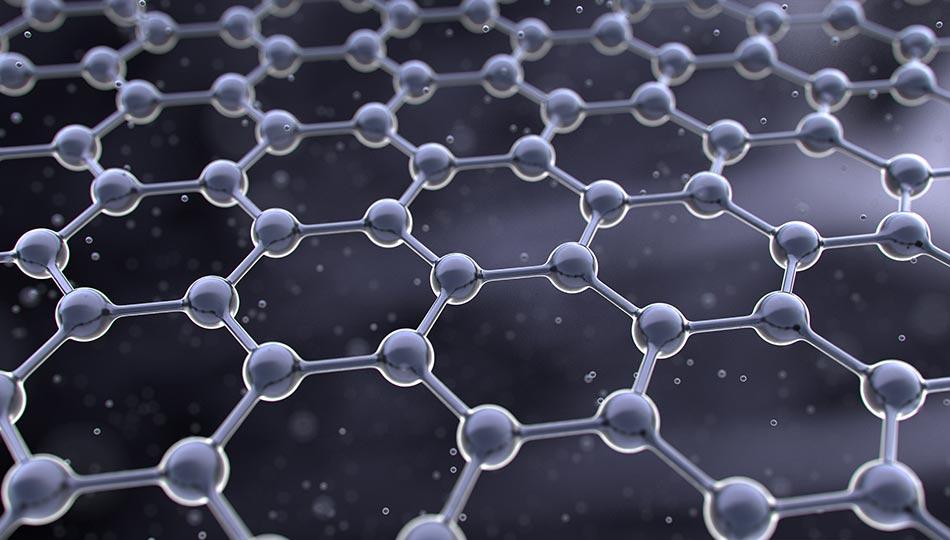
The growing population, economy, and industrialization are creating huge energy demand, as well as putting pressure on the environment. Nanotechnology can combat climate change and can have a vital role in sustainable development.
The nanomaterial market size was valued at USD 9.68 billion by 2021. A CAGR increase of 18.05% is expected during the period from 2022 to 2030. Thus the market size is projected to reach USD 43.1 billion by 2030.
There has been massive research and development in the field of nanomaterials. In the next few years, it is expected to have vast applications in the field of sustainable development. However, researchers are evaluating the potential health risks of engineered nanomaterials.
For example, nanoparticles can be embedded in a composite or attached to a surface. They can also be free, floating in a fluid. But before any of these applications become a reality, more data is needed.
Nanoparticle
Nanoparticles are very small molecules that can interact with other substances and form new structures. The nanoparticles have several benefits in modern medicine and enable the development of new therapies.
The use of nanoparticles in medicine is called nanomedicine. Nanomedicine has shown enormous promise in diagnosing, treating, and monitoring various diseases. Nanoparticles can be formed from natural or manmade particles.
They are also found in the air we breathe, where chemical reactions with pollutants occur. Urban nanoparticles, on the other hand, are a result of human activities and are primarily produced by automobiles with defective catalytic converters.
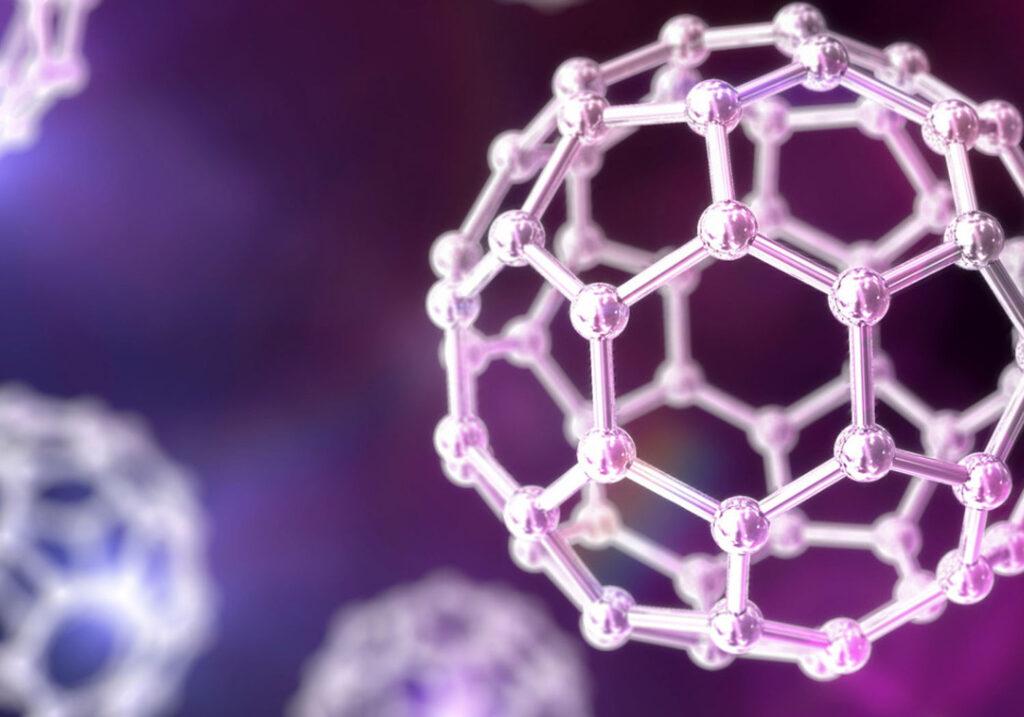
Among the most important applications for nanomaterials are photocatalysis, energy, electronics, water purification, and sensing. They can also be engineered for future uses. Ultimately, the future of nanoparticles depends on a solid foundation of credible health and toxicological studies.
Through the creation of new nano products, we can create more environmentally friendly products. It is expected that by 2030, there will be a rise in the number of nanoparticle products.
The nanoparticle market size exceeded USD 2.5 billion in 2021 and a CAGR of 6% is expected during the period 2022 to 2028. Thus the market size of nanoparticles will reach USD 4 billion by 2028.
Biomaterial
Biomedical material science is the study of how artificial matter is created for medical application in the human body. They are substances that are either derived from nature or synthetic.
Biomaterials are typically formulated to replace or supplement the functions of living organs and tissues. They are usually sterile and biocompatible, which means that they won’t trigger an immune response in the body.
Biomaterials may be either biodegradable or resorbable, depending on the intended use of the material. However, biomaterials must be compatible with living tissue to ensure a successful outcome.
The bio-based materials category includes smart drug delivery systems that target cancer cells. They are incredibly versatile and can be used in many fields of medicine. Most of us have used biomaterials at some point in our life.

This new generation material has the potential to be used in a variety of ways, including treating injuries and diseases and even preventing infections. Biomaterials may be able to help us treat diseases that currently require surgery or other treatments.
Until humans evolved to replace damaged or diseased tissues in their bodies like a salamander, the development of new biomedical materials will be crucial for the well-being of an increasingly aging population.
Stem cells possess enormous potential for tissue engineering and regenerative medicine. Recent advances in biomaterial engineering may provide a new tool to solve problems. Researchers have developed new bio-based materials for tissue engineering, including silk-based biomaterials, nanoscale materials, and polymer-ceramic hybrid composites.
Researchers are incorporating signals directly into biomaterials through novel processing techniques. With contact lenses, pacemakers, dental implants, and artificial joints millions of patients’ lives are transformed through the use of biomaterials.
It can give patients better vision, new heart valves, stronger teeth, improve mobility, and much more. Another property, bio-crude which is a biomaterial made from seaweed, can replace petroleum oil. In addition, advanced color changes are already being developed for fashion products.
Globally, the market size of biomaterial was estimated at USD 110 billion in 2019. The market value is expected to reach USD 245.6 billion by 2027.
Graphene
Graphene is an atomic layer of carbon that is one atom thick. It has incredible strength and is incredibly flexible and transparent. Graphene has been hailed as one of the most important breakthroughs in materials of the future since the plastics revolution more than a century ago.
Graphene is a million times thinner than human hair but 200 times stronger than steel. It is also a better conductor than copper and is completely flexible. Making it an attractive candidate for portable electronics.
There are many reasons to be excited about the future of graphene, especially since its incredible flexibility and microscopic width make it an excellent element for biomedical research.

With this unique material, scientists can create sensors and machines that could move through the body and analyze tissue. They can also develop devices to deliver drugs. In the future, graphene may be used in touch screen displays and as a coating for touch screens.
Its low noise and carrier mobility make it a good candidate for use as a channel in field-effect transistors. Smartphones and tablets could become more durable if they are made from graphene.
Graphene-based devices can be worn around the body, bending and flexing to accommodate different activities. The most obvious advantage of graphene lies in its carbon content, a property that allows life to exist on earth.
The potential applications of graphene are immense and its future is likely to revolutionize every aspect of human life. Because carbon is a vital ingredient in our bodies, graphene is also a promising material for medical research.
This versatile material also has many applications in biomedical research, including biosensors, tiny machines, and other applications. Graphene may even be used in devices for monitoring blood glucose and hemoglobin levels and delivering drugs to specific regions of the body.
Graphene may even offer a solution to the problem of climate change. As it could replace conventional elements in electronics, magnetic sensors and energy storage, and even solar cells. Globally, the graphene market is expected to reach USD 1.6 billion by 2028.
Graphene’s extraordinary strength and flexibility will open up a new world of possibilities for scientists. It could even become an accident-proof material and could make our objects lighter and cheaper.
Carbon nanotube
Carbon nanotubes (CNTs) are tubes made of carbon. CNTs are cylindrical molecules tubes composed of carbon atoms (graphene). They are so small that their diameter is measured in nanometres. CNT is 1-3 nanometers in diameter.
Nanotubes are 100 times stronger than steel. CNTs are good conductors of heat and electricity depending on their configuration. Moreover, CNTs are stiff like diamonds, elastic, have high thermal capacity, and are one-sixth the density of steel.
Carbon nanotubes have many potential applications in various areas such as automobile, medicine, energy, aerospace, defense, structural and chemical industries. The carbon nanotube industry is expected to reach USD 8.7 billion by 2027.
A new research study shows that carbon nanotubes have closed ends. These tubes form when carbon atoms bind together to form a pentagon. The technology behind carbon nanotubes could revolutionize the manufacturing of lightweight spacecraft.

The material has many practical uses, such as in computer chips and smartwatches. The use of carbon nanotubes in fuel cells has many potential uses. The high surface area makes it a good thermal conductor, and it can carry any chemical compounds once surface modifications are performed.
As an excellent chemical sensor and catalyst support, carbon nanotubes can play important roles in various fields. They have an exceptional ability to focus an electric field and emit electrons at low voltages. For this reason, CNTs are a good choice for the cathode of Li-ion batteries.
Aerogel
Aerogels are a class of synthetic porous ultralight materials. The key characteristic of aerogels is their extremely low density and thermal conductivity. This makes them perfect for space travel and uses in rockets and other ultralight devices.
Technically aerogel is a foam that can take many shapes and forms. The aerogel structure is made up of 99.8% of air. Very little of this matter is solid. This material is lightweight and is also extremely durable.
Aerogels are useful for absorbing heat and gases and can also serve as drug delivery systems. One aerogel material is carbon, and it’s used in the manufacture of small electrochemical double-layer supercapacitors.
Basically, aerogel is a substance that combines both gas and liquid properties. It is often a crystalline substance, and its manufacturing process is known as sol-gel. This method involves adding catalysts and alcohols to the liquid before undergoing hydrolysis. Once it reaches this critical point, the liquid/gas substance begins to condense and forms a gel.
Aerogels have also been used in space to trap dust. To extend their applications, scientists can add dopants, reinforcing structures, and hybridizing compounds. The market value is projected to reach USD 1045 million by 2025.
Artificial spider silk
Scientists have been working on creating an artificial spider silk material for years. Spider silks are known for their unique combination of extensibility, energy absorption, and most importantly for their strength and toughness.
This protein-based matter has many properties and is non-allergic. With proper research and development, it could replace plastic-based fibers in the textile industry.
Artificial spider silk has a variety of applications. While the threads are not an exact replica of those produced by spiders, their unique properties make them useful in a wide range of applications.
Some types are used for protective structures, while others absorb energy and transmit vibrations. Silk produced by different spider glands is adapted to a particular use, such as dragline silk for its outer rim, lifeline, and capture lines.
If successful, this new material could replace plastic-based fibers in a variety of applications, including advanced wound dressings, diabetic ulcer treatment, and even medical devices. Synthetic spider silk market is expected to reach USD 7.02 billion by 2030.
Metal foam
Metal foam is solid metal with pore-like, gas-filled cells, or “porosity” in the form of gas. Metal foams are highly porous and have a volume of 5 to 25% of their base metal and 75-95% of the material is empty, filled with air.
Their high porosity makes them ideal for use in a variety of applications, including aerospace and mechanical components. There are numerous benefits to foamed metal. It has the flexibility and porosity to encase objects, such as bullets, in its dense material.

Additionally, this matter can be used to create artificial bones. In fact, it can also reduce noise in some applications. The unique properties of metallic foam have become very relevant in sports equipment.
A golf putter uses a metal foam structure to improve strike control. Helmets and shinbone protectors for football players could be made of metal foams. The global metal foam market is expected to grow from USD 88.16 in 2021 to reach USD 122.70 million in 2028.
Skrilk
A recent breakthrough in biotechnology has made it possible to produce a matter that is as tough as the cuticle of an insect. This material is made up of layers of chitin, which is composed of protein and polysaccharides.
Shrilk is a bioplastic that has all the benefits of conventional plastics with none of the environmental hazards. It’s intended to replace synthetic plastics in plastic ware, like bags and rings.
Shrilk is made up of two components: chitosan and fibroin. Rather than the silk we are used to, shrilk is a protein derived from spiders’ chitin, a substance found in plants and animals.
Chitin is the second most abundant organic compound on earth. This substance is found in insect cuticles, crustacean shells, and plant leaves. It has a chemical structure more complex than steel.
Its mechanical properties change according to the water content. Ultimately, this material can be used in numerous ways. Eventually, Shrilk may replace plastics in consumer products and even be used in medical applications.
Shrilk biodegrades in a matter of weeks and releases nutrients into the environment. In fact, it’s so efficient that researchers have grown plants in soil enriched with it.
Transparent alumina
Optical transparency can be achieved with many different ceramic materials, from glassy to crystalline. Transparent alumina is a versatile material, available in a wide range of forms such as thin films, coatings, fibers, and ceramic crystals.
There are several applications for transparent alumina, including infrared sources. Because of its high intrinsic infrared transmission, transparent alumina may be better suited for this use than fused-silica envelopes.
Transparent polycrystalline alumina may also be used for windows in high-temperature applications. The material is also suitable for applications requiring substantial transmissivity and mechanical strength.
2D materials
Beyond graphene, there exists a host of 2D materials with a wide range of different properties. Think of Lego bricks that children play with to construct buildings and figures. Thanks to scientific developments, scientists have developed something similar, an “atomic-scale Lego set” made of 2D materials.
It consists of a single layer of atoms or molecules. Since the discovery of graphene, a single layer of carbon atoms, scientists have made many other two-dimensional materials with a broad spectrum of physical properties, from insulators to semiconductors to superconductors.
The 2D materials link through weak electrostatic attractions known as van der Waals forces. By combining 2D materials, scientists can build structures to improve the performance of electronic devices, create materials with novel physical properties and discover quantum phenomena.
One group called transition metal dichalcogenides (TMD) combines the incredible thinness of graphene with exceptional semiconductor properties. 2D material is a thin layer of atoms with extraordinary physical properties.
Unlike graphene, a TMD monolayer is three atoms thick. Each sheet consists of a layer of transition metal atoms such as molybdenum between two planes of chalcogen atoms such as sulfur or selenium.
Two-dimensional materials are atomically thin, crystalline solids with intralayer covalent bonding and interlayer van der Waals bonds. They exhibit unique properties that are not possible with 3D materials.
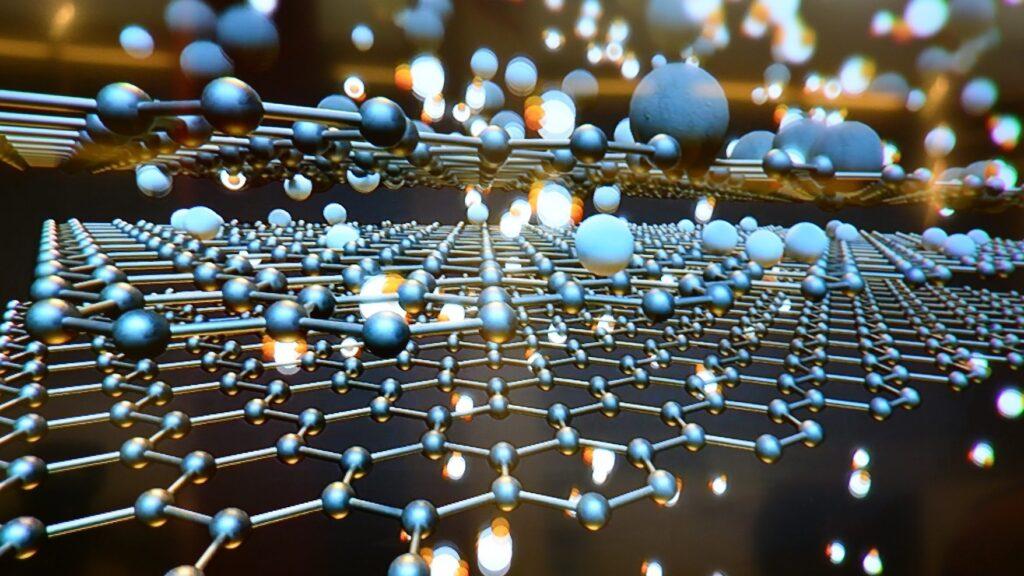
Among their many benefits are high mobility, great conductivity, and high surface Li diffusivity. In the battery industry, 2D materials are often selected as electrodes for their conductive properties and low weight.
However, most 2D materials are monolayers, which do not make them very attractive candidates for battery electrodes. Researchers have begun studying the potential of two-dimensional materials.
Researchers are exploring the possibilities of 2D materials for quantum computing and next-generation ultra-thin devices. However, further research is required to understand their capabilities and how they can be utilized.
Two-dimensional materials offer the potential of creating flexible circuits with novel properties. However, high-volume manufacturing requires the development of appropriate process recipes and precursor materials. A new generation of manufacturing tools is needed to stack atomic layers at a time across silicon wafers.
Metamaterials
Metamaterial reflects the concept that matter is made up of more than one substance. They are substances that possess properties that can change how we see things, like the ability to make light travel through fabrics without bending or absorbing them.
They also have unusual optical effects, like negative refraction. A metamaterial is an artificial substance engineered to exhibit properties that aren’t found in nature, so far. They’re designed with repeating structures allowing them to direct and control the flow of electromagnetic or physical waves through them.
Metamaterials are materials that have both a crystalline and an amorphous state. It can also switch between these two states depending on the temperature of the surrounding water.
The mathematical concept is drawn from origami. Conventional matter interacts with electromagnetic radiation like light or radio waves based on the properties of the material. Metamaterials have incredible properties, like light-bending abilities or superconductivity, that come from their structure.
And that means that engineers can make reality-bending properties emerge from something as simple as acrylic and paper. This characteristic makes metamaterials extremely useful in a wide range of applications.
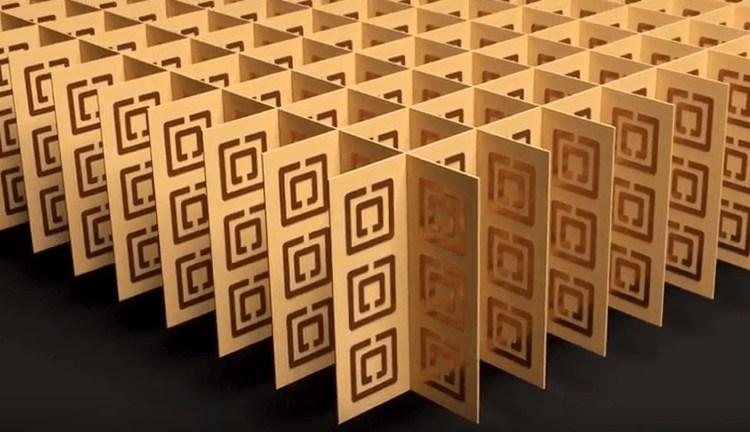
These materials have become a popular choice in photonics and nanoelectronics. The potential of metamaterials is enormous. From building construction to communication systems, there is a wide range of potential applications for metamaterials.
The military is one sector hoping to benefit from the use of metamaterials in the future. It could provide camouflage and a means of surveillance. It could also be used to correct blind spots in cars to increase safety.
It has been used to control sound in a wide range of consumer products. The negative modulus and negative density of metamaterials help to control structural and environmental sounds.
They can also be used to trap sound waves inside a structure, allowing them to be manipulated. Solar panels were once expected to be only 33.7% efficient but today’s metamaterials can absorb light from a wide range of angles, improving the efficiency of photovoltaic panels. With this solar panels could last longer than previously expected.
Globally, the market size of metamaterials is estimated to be USD 1.51 billion in 2022. A CAGR increase of 58.3% is expected during 2022-2028. Thus the market value is projected to reach USD 22.95 billion by 2028.
Auxetics
Auxetic are materials that when stretched, thicken perpendicular to the direction it is being stretched. In other words, instead of thinning, they get fatter when stretched. They are excellent at energy absorption and resisting fracture and are therefore widely used in body armor design.
Auxetic materials are made of porous foams containing individual pores that are larger than a micron. They are capable of deforming to certain extents but overexpansion the materials. These materials have numerous practical uses and can be found in everything from giant architectural constructs to insulators.
The concept behind auxetic materials is fascinating and has been around for many years. Auxetic patterns can be cut out from several different materials and are also used in footwear design and actuated electronic materials.
However, all of these applications are restricted to rather limited shapes. The principle of auxetic is based on the concept that when subjected to stress, they contract laterally. Bulk material consists of a positive Poisson’s ratio.
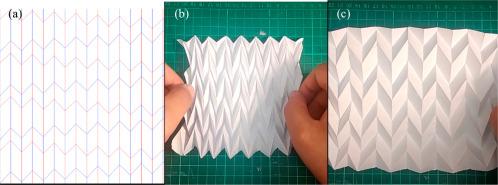
Auxetics materials exhibit a negative Poisson’s ratio. There are few matters in nature that demonstrate the negative poisons ratio. There are some tissues in the body, certain rocks and minerals, and some polymeric honeycombs.
The concept of a material behaving this way is against instinct since the material would have to change its inherent density as it is either stretched or compressed. The promise of creating versatile auxetic materials drives ongoing research.
The end goal of auxetics is to improve human life through its applications. Car windows typically contain multiple layers of glass and polymer and induced strain can cause the layers to delaminate and shrink. Using a material with a negative Poisson ratio could prevent delamination and increase safety. Another application for auxetic is solar cells. Solar cells must be able to sustain long-term use without deteriorating.
Final word
A healthy planet is necessary for all of us. So, we must explore the potential of new generation materials that promote sustainability without compromising demand and quality. These new materials and material combinations are unfolding a lot of potential.
With constant R&D in earth elements, scientists are making stronger, lighter, and more conventional materials. Moreover, materials of the future may do things that are not immediately associated with them today. Not only will these advanced materials make products better, but also contribute to a healthier and more sustainable world.

0 Comments